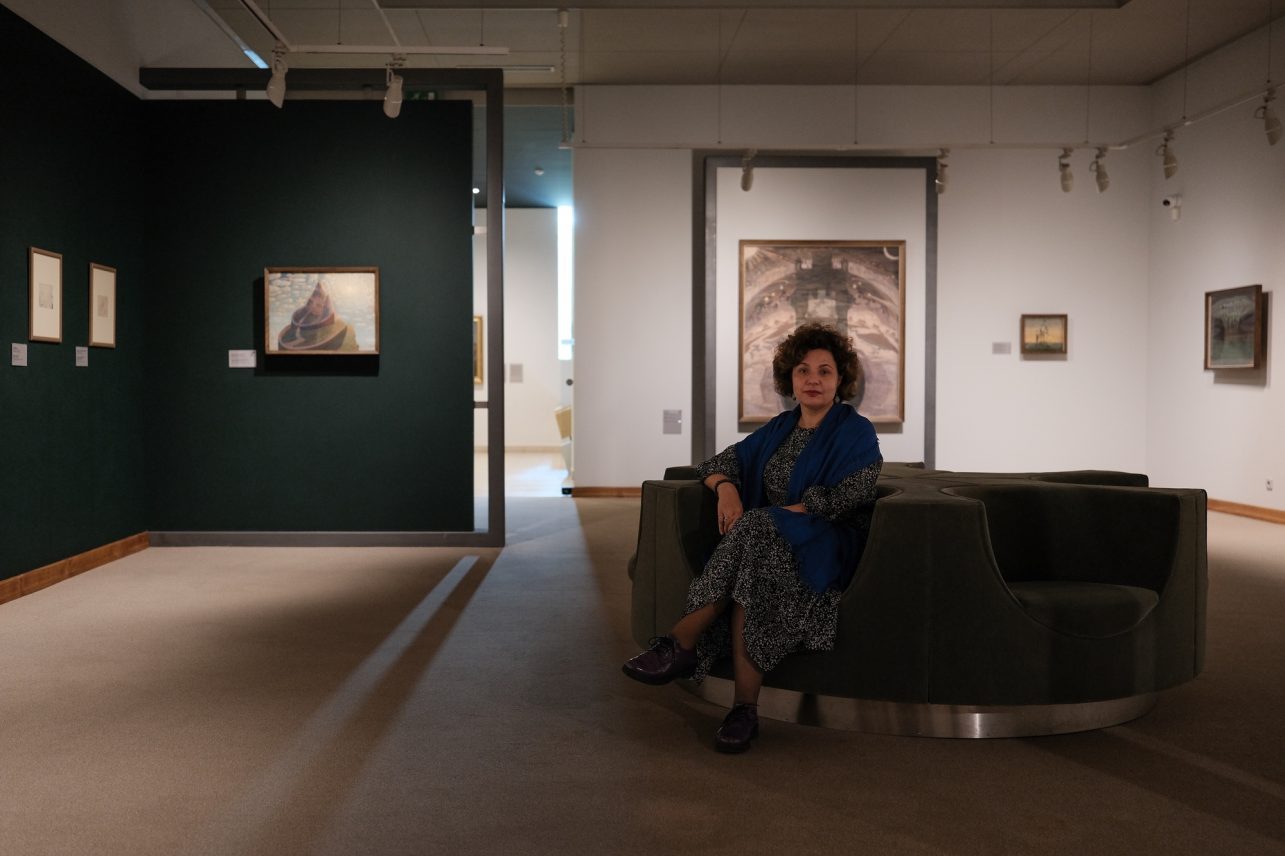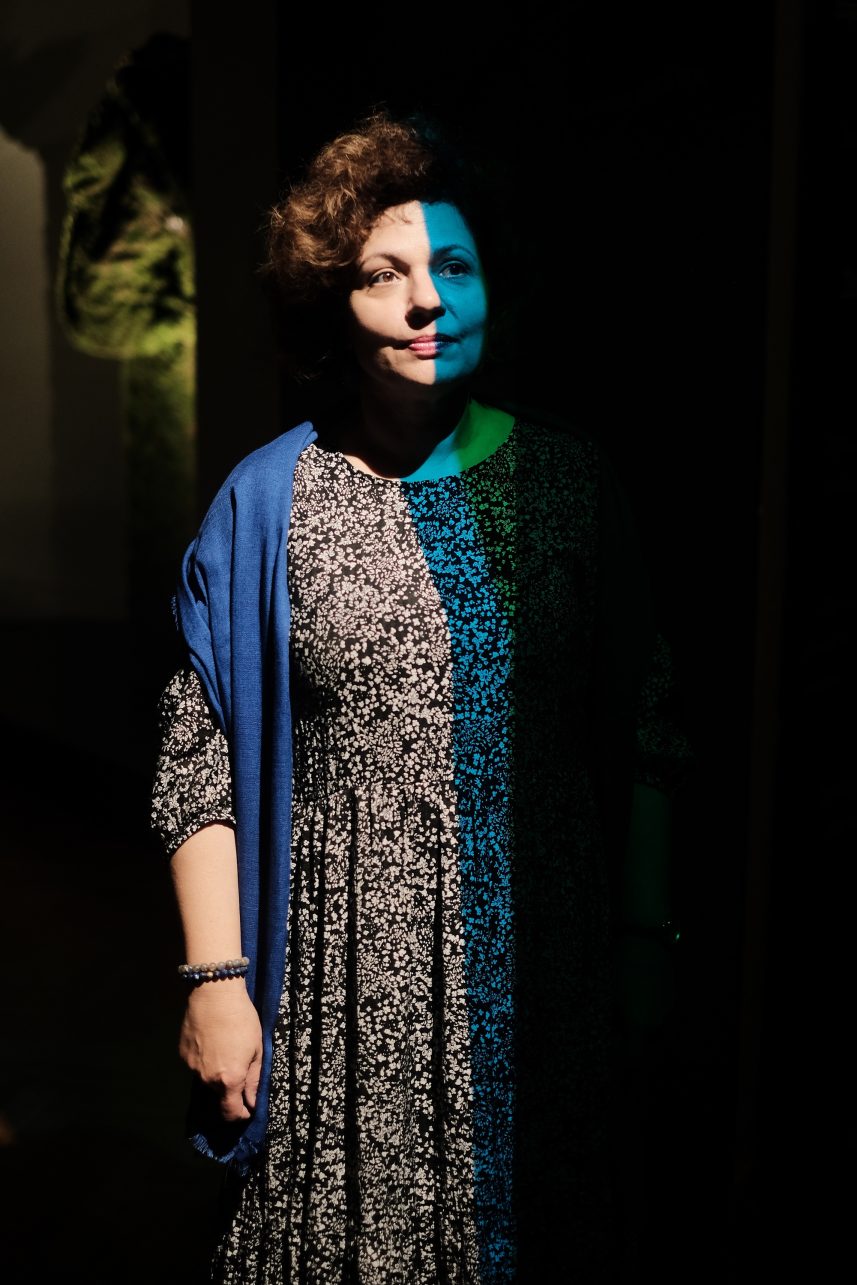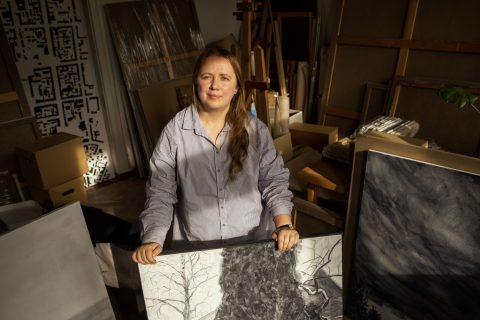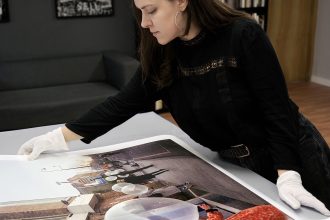We talk more and more openly about mental health these days. As awareness grows, so do the ways to help yourself. One of the relatively new methods is art therapy. In order to better understand how it works, I met with art therapist Sigita Kupčiūnienė, who works at the M. K. Čiurlionis National Museum of Art. She explained how people can be affected by the creative process, what art tells us emotionally, and what different colours mean.
Tell us how you discovered this line of work. How does one become an art therapist?
When I was preparing to write my BA thesis while studying social work at Vytautas Magnus University, I really wanted to combine art and helping people. Then I discovered Tessa Dalley’s book Art as Therapy. It became a kind of a bible for me. Then I started attending seminars, and in 2006 I became a member of the Lithuanian Art Therapy Association. I learned from foreign experts and immersed myself deeper and deeper in this field. Later, a master’s program appeared, combining social work and art therapy, introducing people to art, dance-body, and music therapy methods. I evolved in that environment, started to work, slowly experimented, and discovered my style and gained invaluable experience.

And what brought you to the M. K. Čiurlionis National Museum of Art?
I came precisely because of Čiurlionis, whose work always seemed special to me. First, I started conducting art therapy classes using the works of this artist, and later, more different exhibitions and initiatives appeared where I was able to apply my knowledge. I worked with Marina Abramović’s performance videos, Kodo Chijiiwa’s photographs, in the Archaika exhibition, Žalia exhibition that is still running and others. This is how the seminar Dailės terapija – akis į akį su meno kūriniu (art therapy: face to face with a work of art) was born, where I concentrated all the accumulated experience. I am really happy to work here, I feel like I found my place. Both art and the help provided through art seem very meaningful to me.
What is the process of art therapy? What tools and techniques do you use?
In the prepared space, people can choose from a variety of art supplies including paint and pencils as well as collage supplies. Because we work on the basis of psychotherapy, we adhere to its basic principles: confidentiality, safety, group, and cycle structure. Art therapy sessions usually last between one and a half to three hours and have clearly defined parts. The therapist guides the group through these stages, providing a sense of clarity and safety.
Group art therapy sessions begin by sitting in a circle and asking questions: what did you come with? How do you feel at the moment? Perhaps you brought a dream or a specific memory. First, participants share their thoughts, and then we move on to introductory exercises. In the museum, I start the art therapy process by inviting people to the exhibition, where they encounter the artworks and spend about 20 – 30 minutes meditatively. During this time, I ask the participants to approach the work that most resonated with them in terms of colour, emotion, or theme. I recommend you sit down, look at it closely, imagine it in your mind’s eye, and analyze it from different angles. Memorize or take a picture. Then we move on to the process of creative expression: people have a task ahead of them. We spend about 30 – 40 minutes on drawing and artistic expression. In the museum, I present tools that reflect the techniques used to create the works seen before. For example, if we work with Čiurlionis’ artworks, I give the participants tempera, soft and oil pastels, and pencils.
At the end of the creative part, we have one more important stage: reflection. We sit in a circle once again with our drawings, and everyone puts their work in the center. Other people and the author themselves examine it, name it, and tell everyone how the painting affects them emotionally. I pay attention to symbols and colours and ask questions. Of course, if a person is unwilling or unable to express their thoughts verbally, we can sense their emotions through the images they created: a non-verbal form of communication.
It is more efficient to work with the same group more than once. Opening up and getting to know yourself and the other takes time, and that eureka moment can happen at different times. One person might experience it in the third meeting, another in the fifth, and yet another one only at the very end. But this is precisely what seems important and meaningful because people in these groups interact through the ternary relationship – self, another person, and work of art – and little by little they experience a positive change.
In your opinion, what is the essence of art therapy: stress management, self-knowledge, or maybe help in overcoming traumatic experiences or fears?
Art therapy can be used for all of these purposes. We always set goals: it can be an effort to calm down, rest, pay attention, and give some time to yourself or self-reflection, or maybe one needs to deal with a loss or take root in a new place of work, residence, or group. After all, art therapy is essentially wellness in the broadest sense. When working with a work of art, we indirectly affect the subconscious, the psyche. Art therapy can awaken creativity, and spontaneity, help you discover completely new sides of your personality and thus experience more joy.

People do not have the same knowledge about art, and the natural talent to express oneself through art also differs. How do you ensure all participants feel safe and fulfilled in the sessions?
First, as a therapist, I look at each participant with respect and interest. There is no hierarchy in art therapy, one person cannot be more important than the other, and their artistic ability or knowledge does not determine better results. When, session after session, you manage to trust your therapist, the group, to focus on yourself without comparing yourself to someone else, the biggest changes occur. I also expressed this to people participating in the session, emphasizing that we all have common human experiences and can understand each other. Also, we don’t come here to learn how to draw – art is a means, not an end.
When analyzing works of art, we grasp such elements as colours, shapes, and textures. What importance do they have in art therapy?
It is important for an art therapist, as well as an art critic, to be able to analyze works from various perspectives, both formal and iconographic. We use both an objective view and subjective feelings. Colours, symbols, picture elements, and their composition are a wide space that we explore and see what we can grasp. I lean toward the Jungian technique with such concepts as archetype, metaphor, personal, and collective subconscious, so I look for their manifestations in artworks. Colours, shapes, and other elements, as well as the way of expression, can take on different meanings. By accumulating as much diverse knowledge as possible, we can reveal meanings based on different outlooks: psychological, emotional, or even esoteric.
Can you explain the meaning of different colcoloursors in the context of art therapy? To what extent are such signs universal, and to what extent are they individual or determined by the cultural and social context?
It is worth noting that you should not stick to one definition. For example, “Black colour is bad, it symbolizes sadness.” In a sense, black indicates closedness, but if the author interprets this colour differently, we must accept it. Red colour can symbolize aggression, war, and conflict for one person, and vitality, energy, impulse, and love for another.
Following C. G. Jung, we can see that the personal and collective unconscious determines certain regularities in creating and drawing. Thus, Lithuania also has a certain collective unconscious, in which the nation’s cultural, historical experiences, and traditions are intertwined. This is expressed in folk art and clothes and allows us to guess that there is a certain accumulation of colours, symbols, and feelings common to our culture.
In Lithuania, we associate the loss of a person with black, while in other nations death is associated with the opposite colour: white. Certain signs, symbols, or colours in the drawing can be associated with transitional stages: birth, death, marriage, or other common human experiences. Many people, when asked to visually convey love, will probably use red or pink. However, in the context of different authors, colours acquire a different emotional charge, so I would not be able to name a unified trend.

You conduct art therapy classes at the ongoing Žalia exhibition. What, in your opinion, determined such frequent use of this colour in Lithuanian art? How does art therapy work in such an abundance of different artworks?
I got to know it more deeply myself through the stories of exhibition curators Giedrė Jankevičiūtė and Daina Kamarauskienė. In the exhibition, we observe green hues not only in paintings but also in fabrics, films, cultural phenomena, natural elements, ceramics, and scientific research. Lithuania itself is very green, we have a lot of nature, it is culturally very important to us.
When I conduct art therapy, it is not uncommon for people to choose to focus on different parts of the exhibition. Sometimes they don’t even focus on artworks or objects but on the sayings, for example, related to the colour green, like, “turned green with envy”, or on the part of the city, like Žaliakalnis. Song lyrics come to mind, “At a green stop, green birches wish me luck…” For an art therapist, it is extremely interesting to see how one colour can take on so many different meanings and forms and manifest differently in a creative activity. The exhibition itself has separate halls, where the works seem to convey different psychological colour aspects from peace and enjoyment to anxiety or adversity.
Another direction of the classes you lead is art therapy sessions based on Čiurlionis’ work. Why are his paintings suitable for this activity?
I have researched and admired Čiurlionis’ work for a long time. The colours he used, themes, ideas, and signs are close to my heart. His cosmic works, their symbolism, and ambiguity are captivating. Every painting by this artist takes us somewhere. This kind of creativity can lift a person above their everyday life and routine. It can help raise existential questions about the meaning of life, which we often forget while rushing through life. Many visitors say they came because they wanted to see the work of this outstanding artist again and again.




